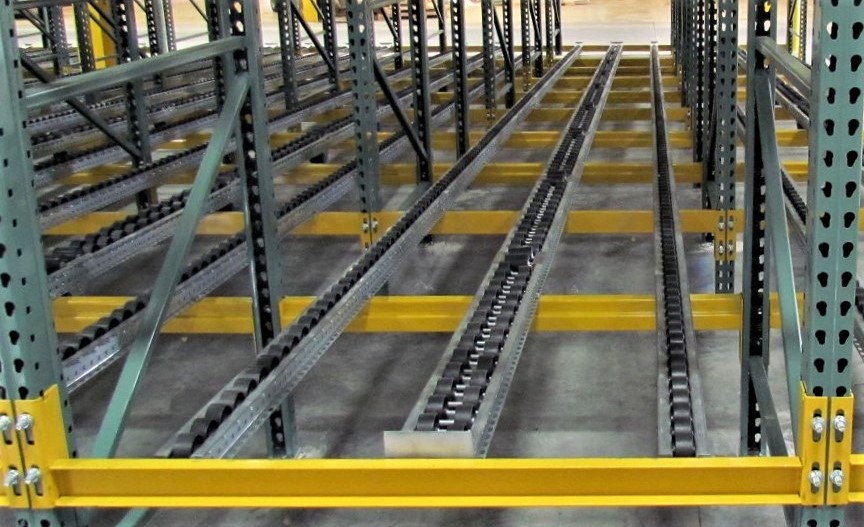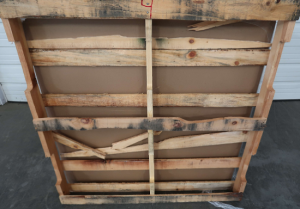A Deep Dive Into Deep Lane Pallet Flow Rack Design
SOLUTIONS
FOR THE TOUGHEST APPLICATIONS
"*" indicates required fields

What does it take to deliver a durable, efficient deep-lane pallet storage system? The Mallard team lays it all out.
Pallet flow rack is an ideal warehouse solution for high-density pallet storage. The deep lane gravity flow design maximizes space and allows quick easy access to pallets by segmenting SKUs by lane. Separate load and pick aisles minimize traffic and congestion to help with efficiency and safety while the gravity flow design automatically replenishes the pick face to keep everything moving.
The process for configuring a deep lane pallet flow system was on display recently in the Mallard Engineering Testing Lab. Our team tested a system for a major automobile parts manufacturer with customer-supplied pallets and boxes. We were able to simulate load weights to ensure the system would provide consistent, controlled flow. The test provides a great example of what to look for during the pallet flow lane design process and how to meet unexpected challenges with smart solutions. Take a look:
Pallet Flow Lane Components
- 3-rail wheeled pallet flow
- Drop-in speed controllers
- Entry guides
- Bolt-on ramp stops
Design Considerations
Very deep lane – 15 pallets deep
Varying sizes of pallets
- 38″w x 45″d
- 45″w x 48″d
Load weights 760 – 780 lbs.
Wood pallets – different styles
Pallet conditions – of the 5 pallets tested 3 were in good condition and two had concerns such as broken and warped boards.
Building a Pallet Flow Lane
Rails – 2 inline rails plus a double staggered center rail make up the 3-rail wheeled system. However, a closer look at the rails will reveal that they are comprised of a hybrid Magnum wheel and I.E. polycarbonate wheel combination. The Magnum wheels are used at the ends to increase durability at the most stressed areas of the pallet flow lane. The rails are set at 37” out to out to accommodate the smallest pallet. The larger pallets will have some overhang in the lane.
Pitch – Initially the lane was set at 7/16″ per ft. pitch but we observed a few hang-ups and restart issues, so the team adjusted the pitch to 1/2″ and this proved to deliver consistent reliable results.
Accessories – At 56” intervals drop-in speed controllers are added to control the pallet velocity and to help keep the pallets centered in the lane.
The lane is finished, or started depending on your position, with entry guides and bolt-on ramp stops. The entry guides help forklift operators quickly and accurately position the pallet into the lane and the ramp stops slow the pallet to a safe stop and secure the pallet in the lane until it is extracted.
What to Watch For
 Broken Pallet Boards |
 Dangling Plastic Wrap |
Two common concerns for pallet flow rack are pallets in poor condition and dangling plastic wrap. Loose items can catch in the wheels or rollers of a pallet flow system and cause damage and/or hang-ups that can be costly to remedy. We recommend that forklift operators should be trained to quickly scan the pallet before loading pallets into the lane to catch these potential hazards.
Go the Distance with Mallard Pallet Flow Rack Solutions
The Mallard team is comprised of experienced gravity flow rack specialists. Our team understands complex warehousing and distribution challenges and turn things around with smart, cost-effective solutions. Our broad product offerings provide everything you need to deliver results. Call Mallard today for a free consultation.

